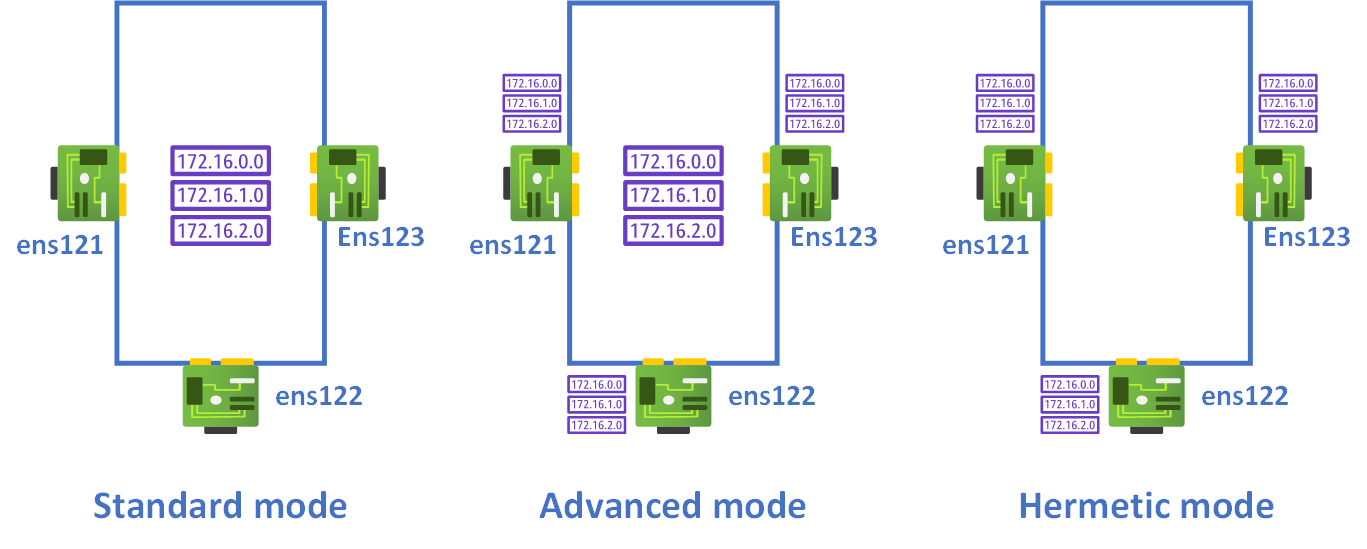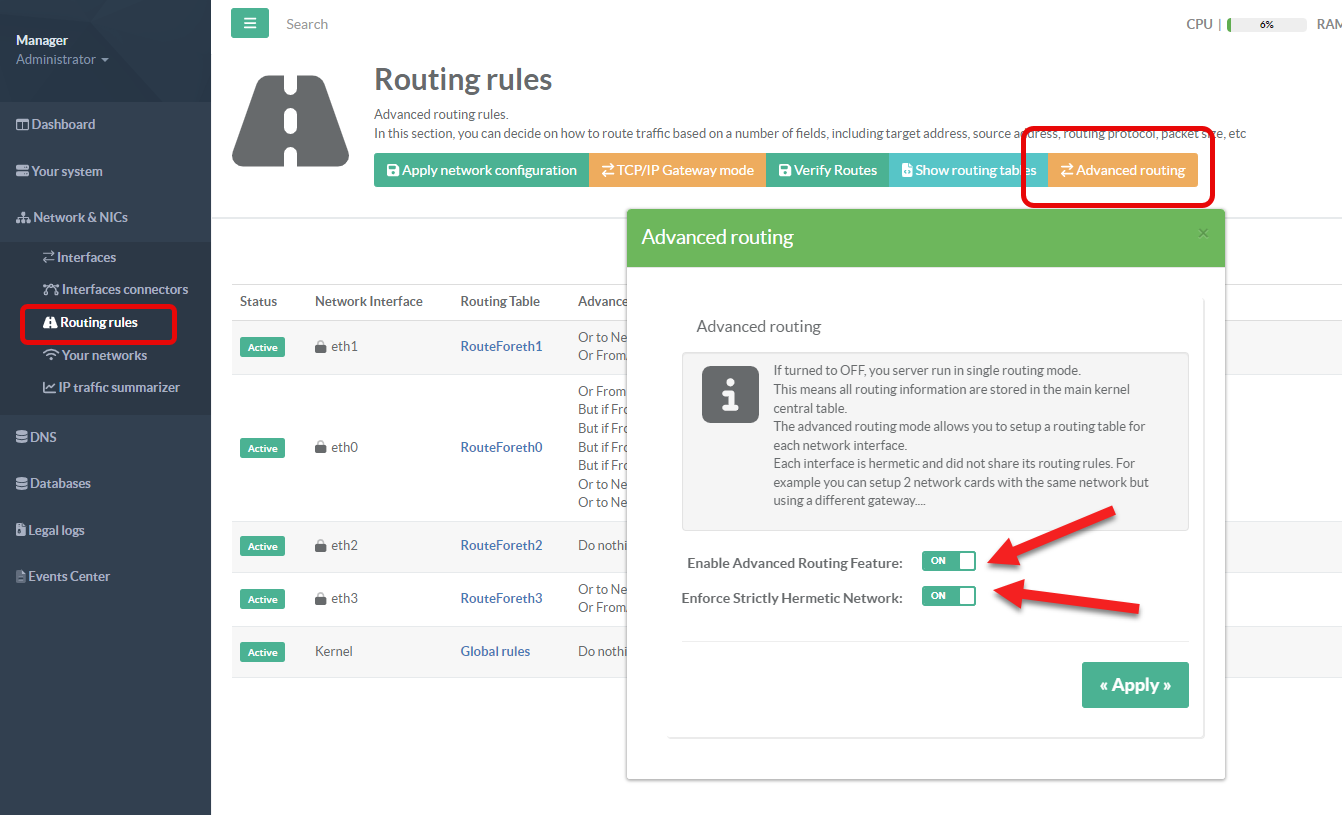By default, when you use multiple network cards with multiple gateways, all routing tables are combined into the global routing table.
This has a major drawback because the kernel, knowing all the routes, would forward network packets based on the first routing rules it has.
In a simple configuration with two distinct networks, the default configuration is sufficient and meets the need.

- Modes can be tuned in the Routing rules section and Advanced routing button

¶ The Advanced Routing feature:
This mode allows you to define additional network paths specific to each network card.
The gateways and networks defined in the network interfaces are placed in the central routing table, and only the specific details are added solely at the network card level.
Thus, the kernel can forward packets from one card to another, knowing that it is aware of the main networks.
¶ Enforce strictly hermetic network
In this mode, the central routing table is empty, and each network card only knows the networks assigned to it, without knowledge of the other networks on different network cards (unless specified in the routing rules). This is why it is called “hermetic” , as no card can communicate with the others.
Therefore, network services must be explicitly configured to use a specific network card; otherwise, they will not be able to determine the correct network route.